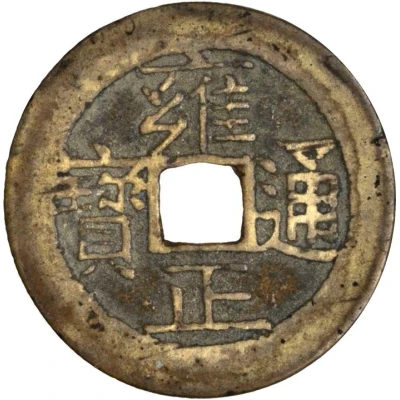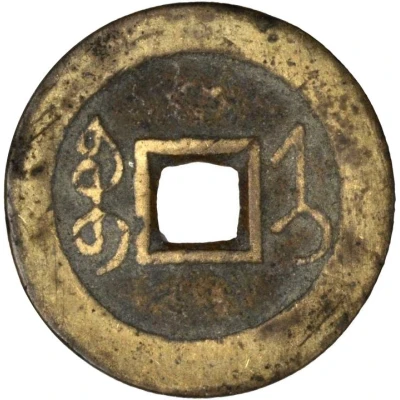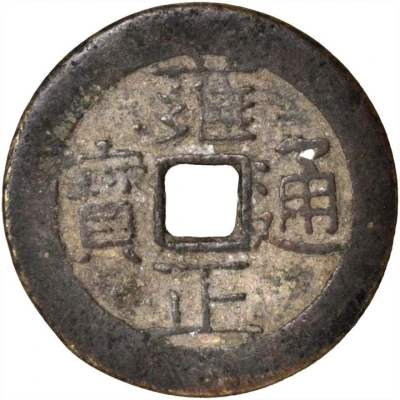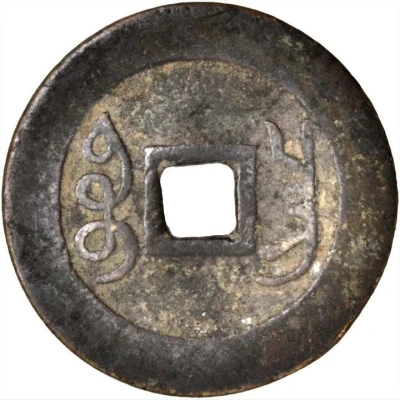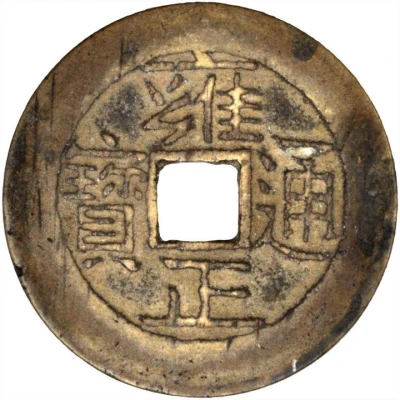
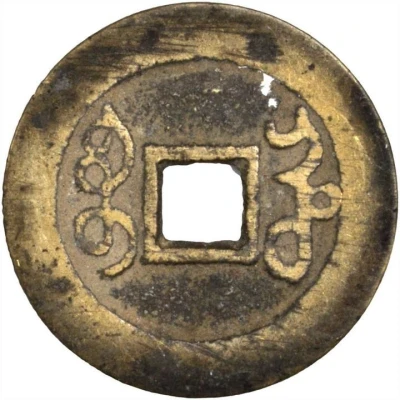

© Stacks Bowers
1 Cash - Yongzheng Tongbao; Boo-he ND
| Brass | - | 27 mm |
| Issuer | Empire of China |
|---|---|
| Emperor | Qing dynasty › Yongzheng (雍正帝) (1722-1735) |
| Type | Standard circulation coin |
| Years | 1729-1731 |
| Value | 1 Cash |
| Currency | Cash (621-1912) |
| Composition | Brass |
| Diameter | 27 mm |
| Shape | Round with a square hole |
| Technique | Cast |
| Orientation | Medal alignment ↑↑ |
| Demonetized | Yes |
| Updated | 2024-10-04 |
| Numista | N#223597 |
|---|---|
| Rarity index | 94% |
Reverse
Two Manchu words (read vertically) separated by the hole.
Script: Mongolian / Manchu
Lettering: ᠪᠣᠣ ᡥᠣ᠋
Translation: Boo-he
Edge
Plain
Interesting fact
One interesting fact about the Yongzheng Tongbao (Boo-he) coin is that it was the first coin in Chinese history to feature a portrait of the emperor. The coin features a profile of Emperor Yongzheng, who ruled from 1722 to 1735, on one side, and the Chinese characters for "Tongbao" (通宝) on the other. This was a significant departure from previous Chinese coins, which had typically featured only symbols or characters. The inclusion of the emperor's portrait was seen as a way to emphasize the power and authority of the emperor, and it set a precedent for future Chinese coins.
